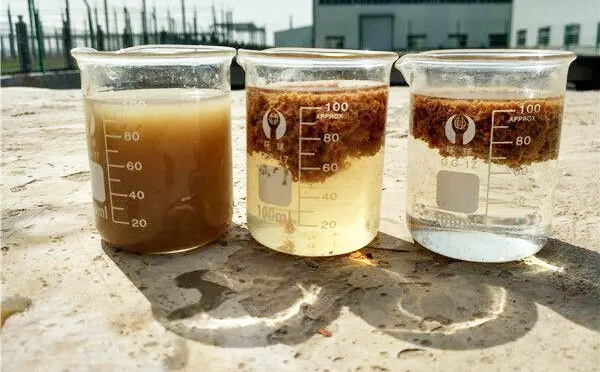
Main Pollutants in Paper Mill Wastewater
• Suspended matter: including settleable suspended solids and non-settling suspended solids, mainly fibers and fiber fines (i.e. broken fiber fragments and miscellaneous cells).• Easily biodegradable organic matter: including low molecular weight hemicellulose, methanol, acetic acid, formic acid, sugars, etc.
• Difficult to biodegrade organic matter: mainly derived from lignin and macromolecular carbohydrates contained in fiber raw materials.
• Toxic substances: black liquor contains rosin acid and unsaturated fatty acids.
• Chroma: residual lignin contained in pulping effluent is highly colored.
Paper Mill Wastewater Treatment Process

Hydrolysis pretreatment:
Papermaking wastewater is initially separated to remove large particulate matter, and then enters the hydrolysis tank. Under the action of auxiliary agents and microorganisms, organic matter is decomposed into degradable substances, reducing the concentration of organic matter in the wastewater.Coagulation and sedimentation:

The wastewater after hydrolysis pretreatment contains suspended solids and colloidal substances. It is treated with a coagulant (such as polyaluminum chloride). The chemical reaction causes it to condense into large particles, which are then separated by precipitation treatment.
Activated carbon adsorption:
Wastewater after coagulation and sedimentation treatment may still contain organic substances and pigment substances that are difficult to remove. Activated carbon can remove organic substances and pigment substances in waste water.Redox treatment:
After adsorption by activated carbon, most of the organic substances in the wastewater have been removed, but there may still be some organic substances and heavy metal ions that are difficult to remove. Using redox technology, it is converted into harmless substances.
Membrane filtration:
Wastewater after redox treatment may still contain tiny suspended solids and colloidal substances. Membrane filtration technology is used to further purify the water quality and intercept tiny particles and colloidal substances.Disinfection treatment:
Finally, the treated wastewater is disinfected to ensure that microorganisms are completely killed. Commonly used disinfection technologies include ultraviolet and chlorine disinfection.The role of activated carbon in paper making wastewater treatment

Paper mill wastewater usually contains a large amount of organic matter, such as wood fiber residues, pulp residues, grease, resins and various chemical additives. These organic substances not only give wastewater a high degree of color and turbidity, but may also produce unpleasant odors and cause serious pollution to the environment.
Activated carbon employs its highly porous structure and expansive surface area to effectively adsorb impurities such as organic compounds and pigments in wastewater, leading to a significant enhancement of water quality.
• Removal of color and odor: Activated carbon can absorb organic pigments and odorous substances in wastewater, reduce the color and odor of wastewater, and improve water quality.
• Removal of organic matter: Activated carbon has good adsorption capacity for organic matter in wastewater, including wood fiber residues, pulp residues and chemical additives.
• Removal of heavy metals: Some chemicals used in the papermaking process may contain heavy metal ions. Activated carbon can also effectively absorb these heavy metal ions and reduce heavy metal pollution in wastewater.
Selection of Activated Carbon for Dye Wastewater Purification
Coal-based powdered carbon, a commonly utilized adsorbent, plays a pivotal role in the treatment of paper mill wastewater. Its highly porous structure and large surface area endow it with outstanding adsorption capabilities, effectively removing organic substances and pigments from wastewater to improve water quality. Typically, coal-based powdered carbon comes into contact with wastewater, adsorbing organic matter and pigments to facilitate purification.| Item | Activated carbon powder |
| Size | 200mesh, 325mesh |
| Iodine value | 700-1100mg/g |
| Ash | ⩽10% |

